.
Malaysians are a difficult crowd to please when it comes to deciding the perfect car. Everyone seems to have an opinion about it and getting a general consensus where you other half, their extended family, your extended family, your friends, colleagues and bosses and all their pets to all agree that it’s a good buy is as easy as nailing jelly to a tree. As our imaginary friend, Mr Chan in a Proton advertisement aptly puts it, “everyone talks about cars but how much do they know about cars? I wonder now”. In an attempt to answer this riddle, we have summarized the opinions into the following:-
.
National car – poor QC, poor fuel consumption, always break down
Continantal car – no resale value, difficult to find spare parts, expensive to maintain, not reliable
Japanese car – as exciting as a corpse to drive, mostly with compromised passive safety features,
.
Last but not least, Korean cars which have always been said to have the resale value of cow dung, spare parts as rare as finding a RM100 bill on a sidewalk, the fuel consumption of an F1 car minus the performance, the durability of Proton’s power windows and of course, the ever common so-high-price-for-a-Korean-I-better-buy-a-Toyota-Vios-Honda-City.
.
But are those perception still relevant today? Kia Malaysia made great headway into the hearts and minds of Malaysians with the introduction of the Kia Forte at the price of Japanese B segments a couple of years back. Sadly, we won’t be seeing a repeat of such excellent pricing in today’s markets and Kia models are now priced relatively closely to their Japanese rivals with each successive launch. The Kia Rio, launched in January this year boasts an impressive list of features and is available in two trim levels; the full spec SX and the EX. It comes with a price tag that not all Malaysians find agreeable. For it’s asking price, does it have what it takes to continue Kia’s appeal into the Malaysian buyers? We think so and heres why:-
.
.
Design
.
.
Chic is probably the best word to describe the Kia Rio. With its huge front headlights and probably the smallest Schreyer Tiger nose you’ll ever find in a Kia, the entire front has a very neat and tidy impression. One that does not pretend it’s a vehicle capable of great speeds nor is it pretentious of being expensive. It’s a modern city car and roaming the urban jungle is what it is designed to do best.
.
.
No modern car these days is complete without a set of LED DRLs which the Rio has.
.
.
Measuring 4,045mm in length, 1,720mm in width and 1,455mm in height, the Rio is longer and wider than the Suzuki Swift and generally, its dimensions are close to that of the Ford Fiesta. Seen from the side, the rising belt line, often seen in SUVs like Land Rover Evoques to create a sense of dynamic motion looks refreshingly good on the Rio. Coupled with a parallel crease line on the lower part of the doors makes the vehicle’s silhouette look purposeful and energetic, especially how the creases heighten the appearance of the rear wheel arches.
.
.
.
Speaking of wheels, the most telling difference between the SX and the EX is the rims. The SX gets 17″ light weight alloy wheels while the EX has 16″ rims.
.
.
The burgeoning wheel arches are visible seen from the rear, enhancing the impression of a heavy, lowered center of gravity. The Rio comes equipped with rear fog lights which comes on the lower right side of the bumper. Seen at night, it has one of the nicest rear light signatures you can find in a B segment and there is no way you can mistaken it to be anything other than a Rio.
.
.
.
.
Performance
.
.
It’s a 1.4litre Gamma MPI CVVT petrol engine you’ll find under the bonnet, capable of serving 109PS worth of power at 6,300rpm and 137Nm of torque at 4,200rpm. Paired to a 4-speed automatic gearbox, the Rio isn’t the type of car that’ll give you a heart attack when you floor the gas pedal but it has sufficient push to provide excitement to the regular Joe. The gearbox may not sport 6 gears but it is intelligent enough to find the right ratio most of the time. At 110kph, the rev meter spins at 3,000rpm, which may sound a tad high to some people.
.
Although the SX is shod with 205/45/R17, it’s acceleration is quite similar to the EX’s 195/55/R16 launch from standstill. There are no official numbers from Kia but on a personal note, it pulls well and drivers will have no problem keeping up with and overtaking traffic with it.
.
.
Ride and Handling
.
For suspension, the Rio has MacPherson struts up front and Coupled Torsion Beam Axle (CTBA) behind. Like most Kias nowadays, the motor driven power steering is quite accurate and responsive; the Rio is remarkably agile and twisting around city malls car parts and traffic is a breeze. For its size, finding a place to park is not much of a problem wherever you go.
.
It’s not built for speed but you get marginally better road holding with the SX due to the larger rims but note that if you push the car a little faster over the apex, you might find the car pointing straight ahead instead of turning the direction you want it. The good thing is, most of the time, the human psyche of self preservation wins and we usually ease off the throttle when entering a sharp corner (unless one is stupid enough to be drinking and driving intoxicated). Can’t really say who’d come off a corner faster; the Rio, Suzuki Swift or a Ford Fiesta? I guess it doesn’t really matter at the end of the day since one shouldn’t get too carried away with B segment city cars like these.
.
In cabin noise is very well insulated and unless you happen to be pushing the engine beyond 3,500rpm, you can enjoy a decent conversation without having to raise your voice like Parliament is in session. Wind noise is kept in check up to speeds of 140kph before it starts to seep in.
.
The biggest complaint I have with the Rio is the driver headrest which, like the newly launched Cerato tilts the head in an angle between looking straight and nodding. In short drives like the city, it’s mild enough not to be noticed but when you take the car for a long drive outstation drive, it gets irritating. Kinda like an itch when you begin to notice it; what’s seen (of felt in this case) cannot be unseen. Strangely enough, when you swap the driver’s headrest with the front passenger’s headrest, it felt better. Not sure if it’s just a placebo effect but we’re in the midst of clarifying with Kia Malaysia to determine if there is two different part number for the headrest and if it is, could it be wrongly installed since Korea is a left hand drive market. Will update as soon as we have any info on this.
.
.
Cabin Convenience
.
.
The cabin layout is kept simple and fuss free and the design makes full use of the entire dashboard. What needs to be there is there and all within easy reach of the driver. The SX comes with keyless entry and engine start stop (button located on dashboard behind the steering wheel on the left) while the EX makes do with a conventional folding key.
.
.
The leather wrapped, tilt and telescopic steering provides drivers with a meaty grip that’s not often found in this segment. Signal stalks are located on the left side in the European configuration like most Kias nowadays. It’s a pity that it doesn’t come with paddle shifters.
.
.
.
The instrument panel of the SX is probably worth half of the price difference between it and the SX. The Supervision cluster found in it exudes a greater degree of class whereas the standard one found in the SX felt rather meh.
.
.
On the lower right side of the steering are the buttons for parking sensors, ESP, meter illumination and manual headlamp leveling.
.
.
The sound system doesn’t disappoint with the Arkamys Audio System. Bass reproduction is not bad for a stock 6-speaker system with good clarity. The headunit plays radio/CD/MP3/AUX and RDS. Through it, you can also pair your phone to it via Bluetooth and the connection also allows you to stream music. Calls made through it comes across clear as long as you’re facing forward and clarity improves if you angle upwards towards the sunvisors where the nearby microphone is located.
.
.
Below the headunit are the air conditioning controls (full automatic with cluster ioniser for the SX) and those funky switches that activates the AC, window defog system and air recirculation. If you’re a little big size, your left knee may accidentally brush against the outside air in switch and that’s not a good thing to do if you happen to stop next to an old diesel bus who looks like the authorities have not inspected it for a while.
.
.
You have to love the Koreans for having two 12V ports. With GPS and Smartphones, 2 is the perfect number …. wait, how do I power the on board video recorder?
.
.
I can’t help but think how much cooler if the seatbelt indicators are PacMan icons. Don’t know where that thought came from.
.
.
There’s this little nook above the seatbelt indicators that’s big enough for phones and receipts. Smart Tags won’t go in there.
.
.
Instead, throw your Tag into the middle compartment which is deep enough to swallow almost anything.
.
.
Speaking of swallowing, aside from the two cup holders you find in the middle, Kia designers made the front door pockets to be big enough to snuggly fit a 1.5litre water bottle. I seriously wonder how many B segments with doors can do that.
.
.
.
Compared to the Fiesta and Swift, the rear legroom of the Rio appears to be the most spacious and at no time did I feel claustrophobic sitting behind. There aren’t any rear air conditioning vents but one wonders if it is necessary for a car this size considering the thorough put of the aircon system is more than adequate for our weather.
.
.
The boot offers 288litres of space is quite acceptable for a B segment hatch and can improve further once the 60:40 split folding rear seats are down.
.
.
Strange that Kia gives a full sized spare tire but hey, no one is going to complain about it, right?
.
.
Safety
.
If you’re thinking of buying a car that’s meant for your loved ones, you’d be glad to know that the Rio has a slew of active and passive features to ensure they get home safely:-
.
- Dual front airbags
- Side airbags
- Curtain airbags (total 6 airbags)
- Driver side and sunroof anti pinching technology
- Euro NCAP 5 star rating
- Front 3-point ELR type with height adjuster seatbelt
- Rear 3-point ELR type (sides) and 3-point static center seatbelt
- ISOFIX child anchor
- Rear parking assist system
- ABS
- EBD
- BA
- TCS
- ESC
- Vehicle Stability Management
.
.
Specifications
.
1.4 EX
.
Exterior
.
- LED DRL head lamp
- High mounted LED stop lamp
- Electric adjustable, integrated side indicators, electric folding side mirrors
- 16″ alloy wheels with 195/55 tires
.
Interior
.
- Black color fabric upholstery
- Metal look center fascia trim
- Trip computer
- Sunvisor with illumination
- Radio/CD/MP3/AUX/RDS headunit
- 6 speaker system
- Manual air conditioning
- Aluminum driving pedals
- Active head restraint, height adjustable (Driver only) front seats
- 60:40 split folding with headrest adjuster rear seat
- Motor driven power, leather wrapped with audio and bluetooth connectivity controls steering, tilt and telescopic
- Front and rear powered windows with driver auto up & down and driver anti-pinch safety window
- Glove box cooler with illumination
- Luggage covering shelf cover
.
1.4 SX
.
In addition to the 1.4 EX unless stated otherwise
.
- 17″ alloy wheels with 205/45 tires
- Front fog lamps
- Sunroof
- Supervision cluster instrument panel
- Fully automatic air conditioner with cluster ionizer
- Auto defog system
- Rain sensor
- Keyless entry smart key
- Push Start button
.
.
Ownership and Maintenance
.
With a 5-years unlimited mileage warranty, the Kia Rio SX retails for RM79,888 and the EX is cheaper at RM73,888. Servicing is done once every 10,000km (with the exception of the first 1,000km) and the cost is laid out as below:-
.
.
The B segment market is as competitive as smartphones nowadays; even without counting the Proton Persona, we’ve got more than 12 options to choose from. Since it’s launch, the Rio has seen two other competitors entering the B segment ring (which is getting as crowded as an LRT train during rush hour). Well technically, it’s just one (the Peugeot 208) since the Swift is a facelift (and the new Ford Fiesta is due some time very soon). Compared to the rest, here’s how the B segment is shaping up:-
.
.
Note: Some of the information found on the chart above may be outdated depending on when you read this article so best recheck yourself and share with us so that we can correct any errors. Also, the comparison models here may not be the only variants offered by the manufacturer.
.
So let’s go back to the part where Malaysians are worse than Gordon Ramsey when it comes to having an opinion about cars:-
.
- Sentra – What, they still selling this??
- Mazda 2 – Only if you love tight places, especially at the back.
- City – Expensive la
- Jazz – New model out in Japan, why buy outdated design?
- Vios – Toyota’s milo tin, need we say more?
- Swift – Engine downsized from 1.5litre to 1.4litre but price not downsized as well?
- 207 & 208 – If you like S&M, you’d love Peugeot’s legendary after sales
- Almera – Ironman themed HU, makes you feel like Tony Stark ….. a very poor Tony Stark
- Polo Sedan – Why VW still produce old engine with old gearbox? No DSG and some more from India?
- Fiesta – My mother’s neighbor’s auntie’s 2nd mother’s son’s wife say ah, after sales and parts availability vely bad

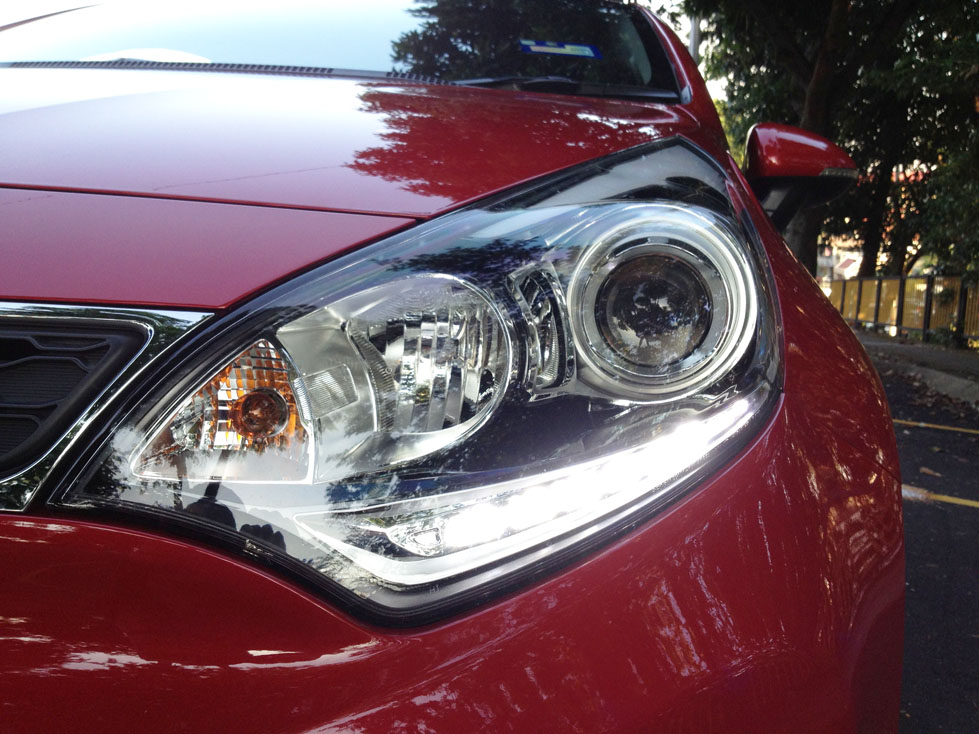


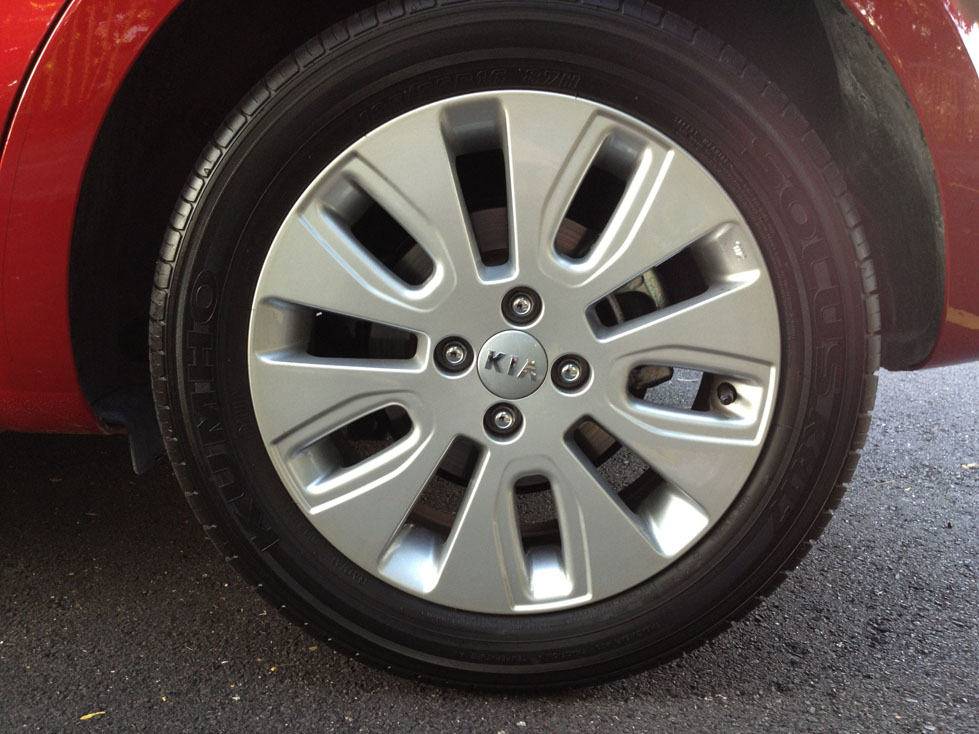

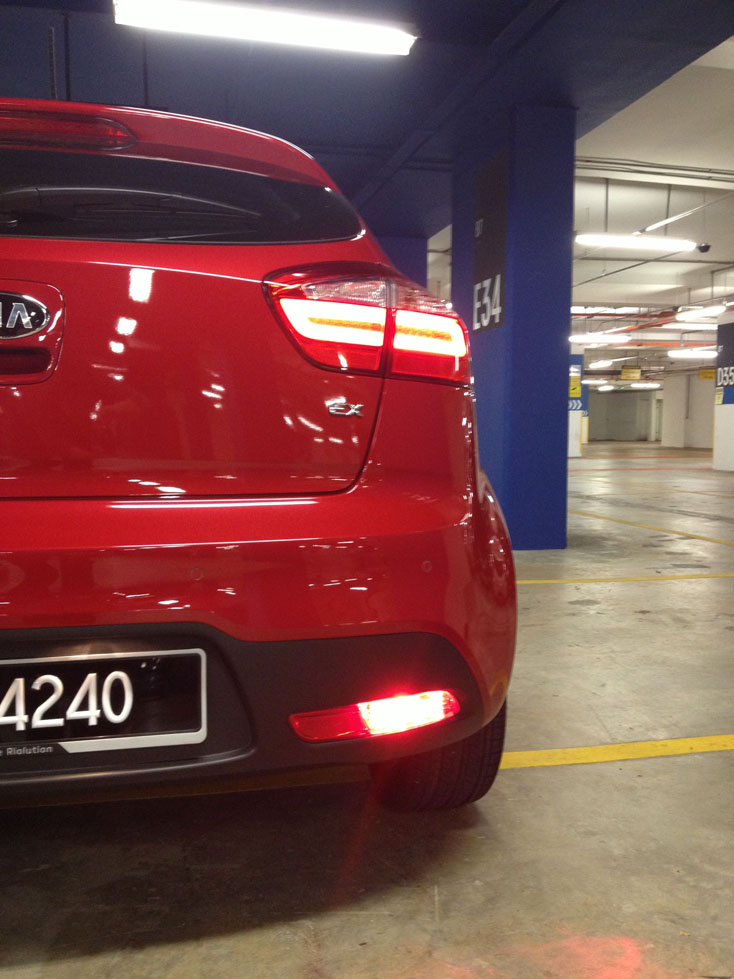





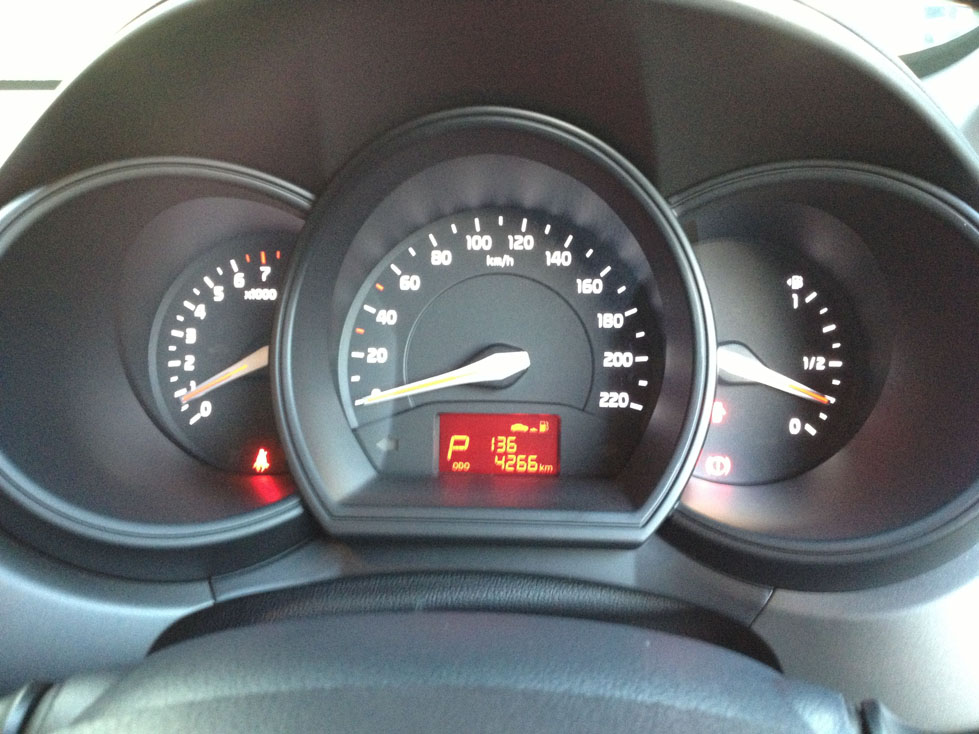
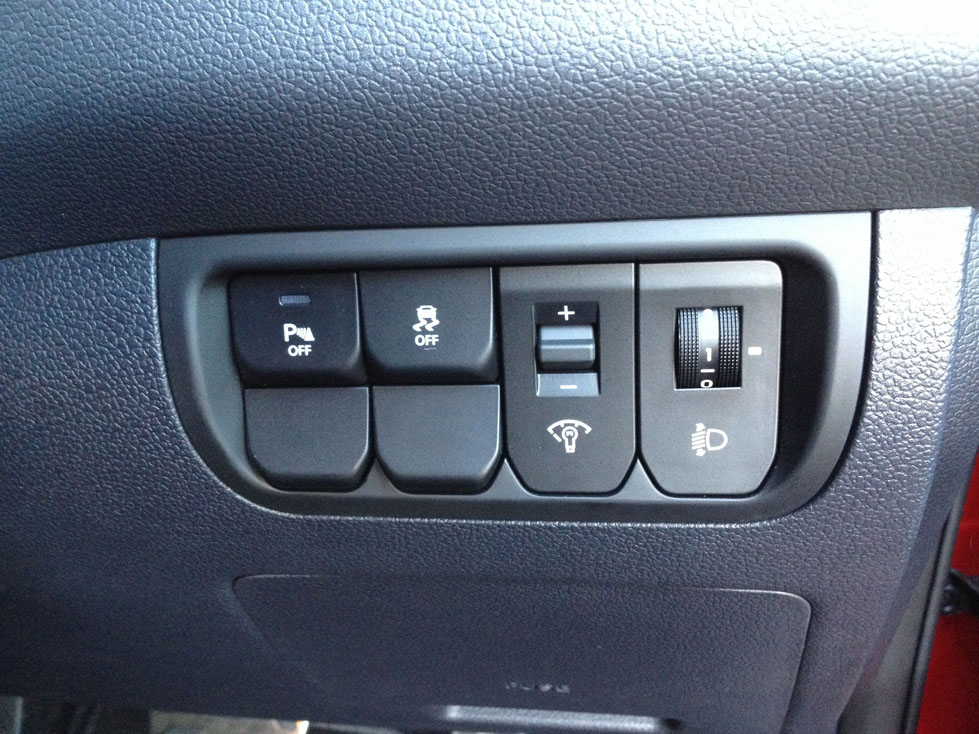
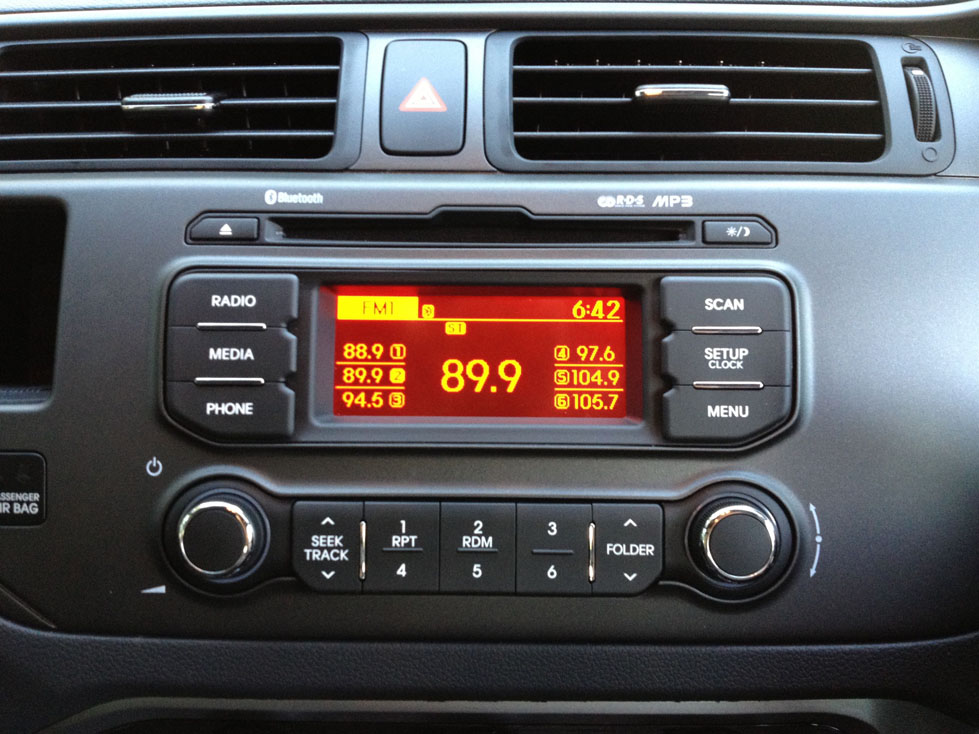

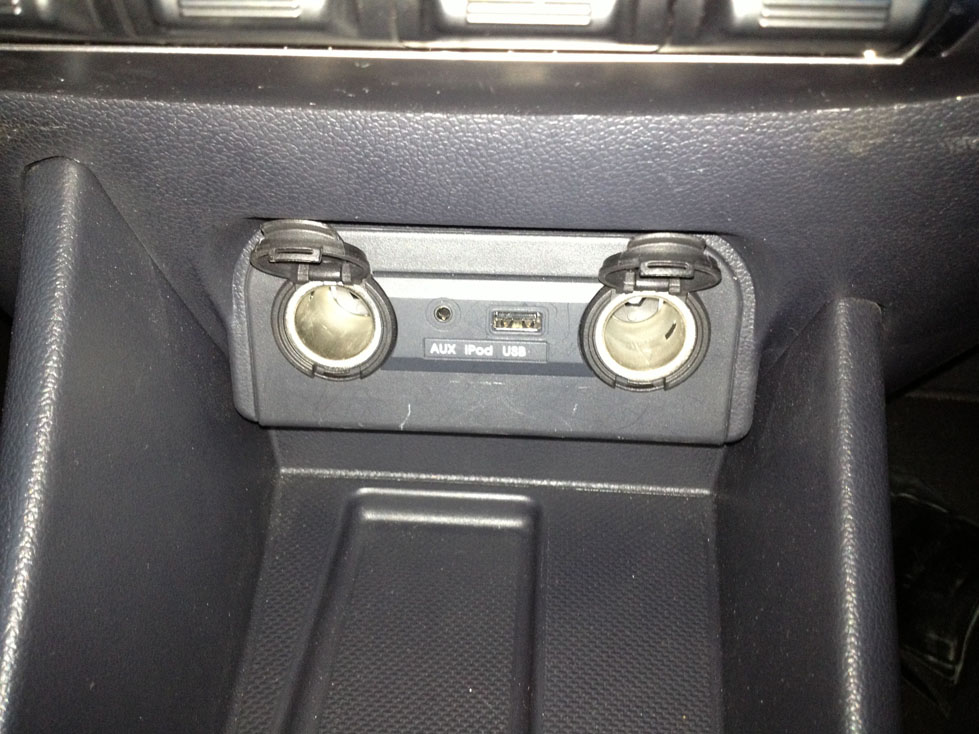
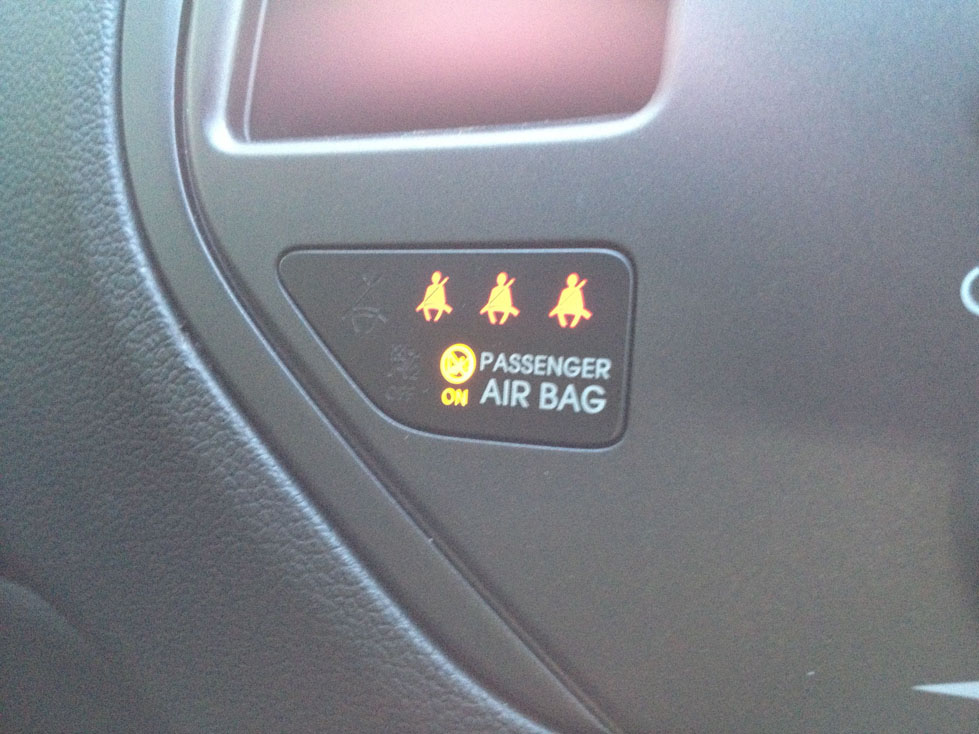






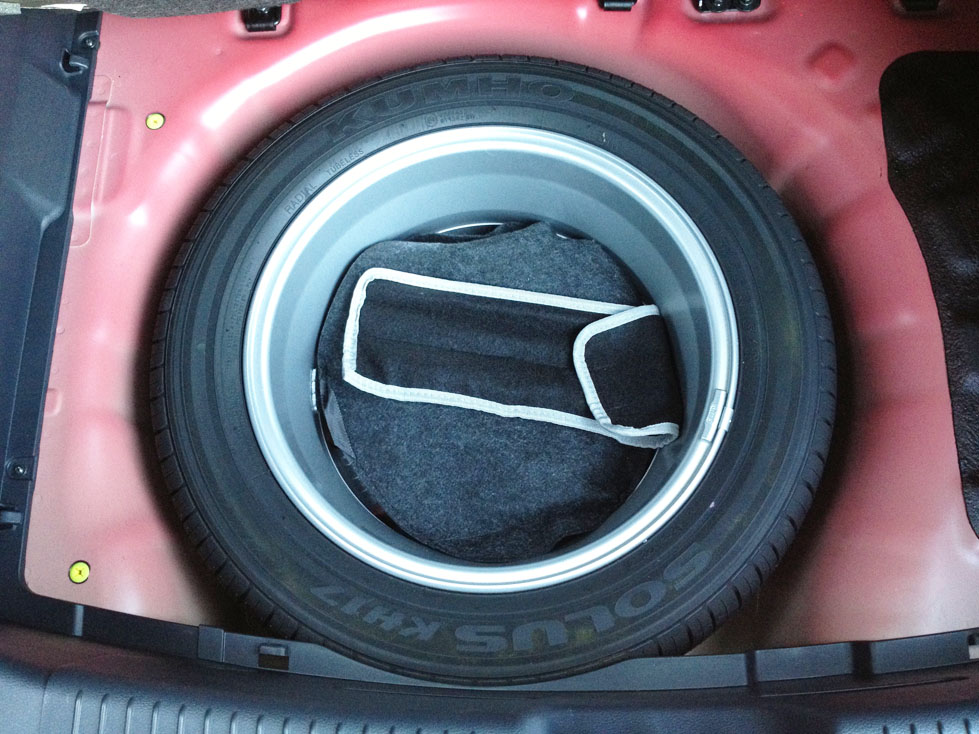

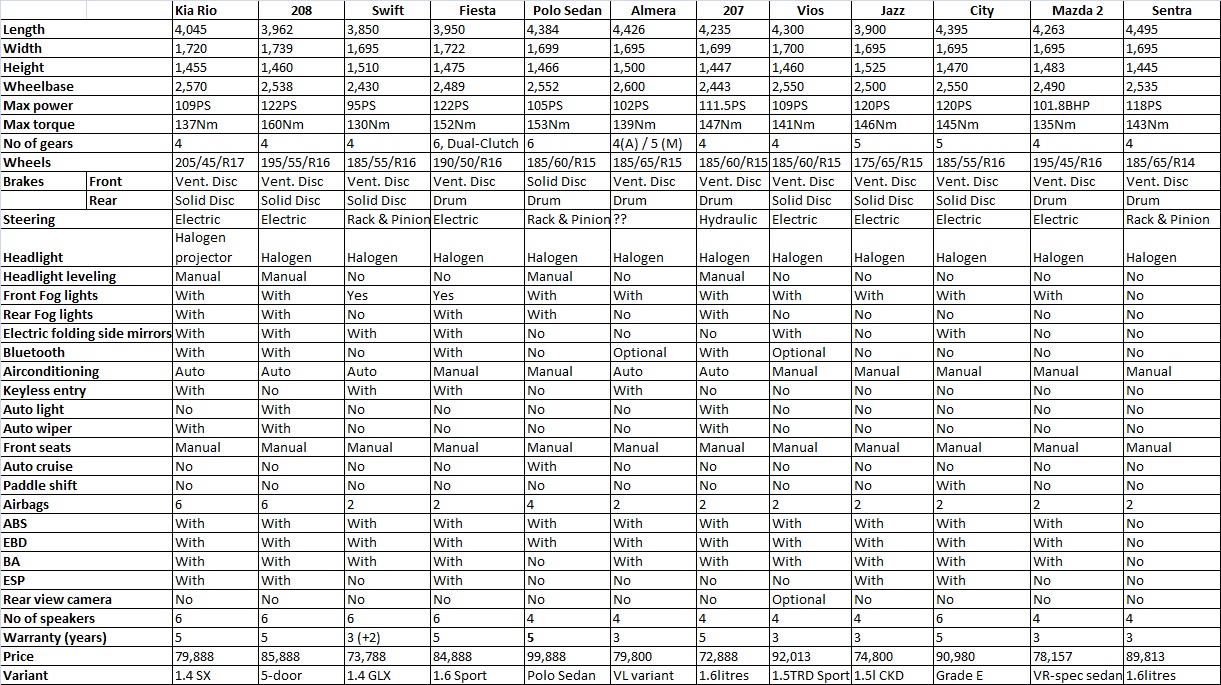
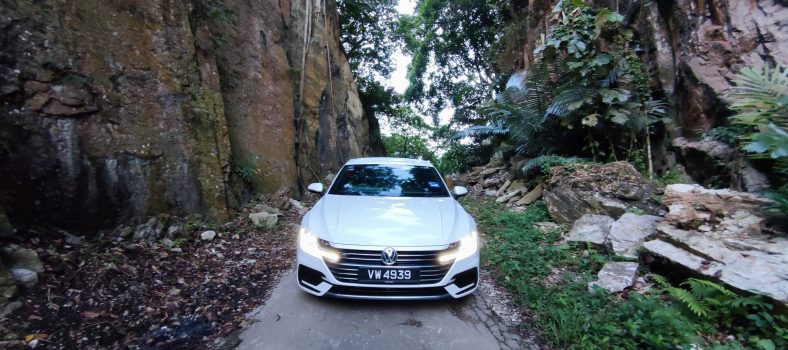


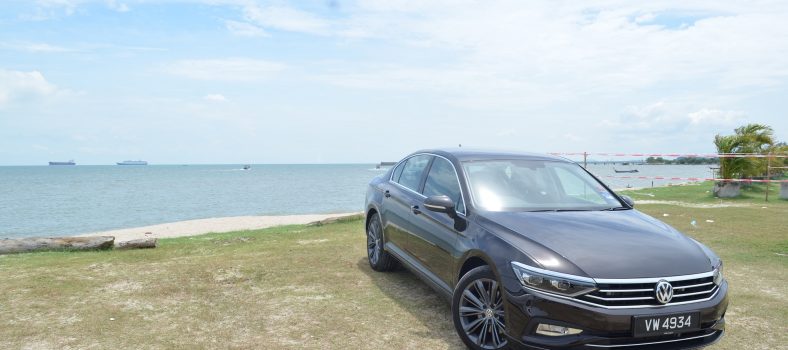
9 Comments
“My mother’s neighbor’s auntie’s 2nd mother’s son’s wife say ah, after sales and parts availability vely bad”
Hahahahaha
And wait. Fiesta no more 7 airbags? O.o NOOOOO.
I find “Mr. Chan” Proton advertisement to be really tacky with that cheesy “Ah Beng trying to speak proper English” accent. I always switched to another radio station the moment that advertisement is aired.
Hi there, how about the Chevy Sonic?
It was launched around this new Rio launched if not mistaken, yet rarely seen on the road compared to Rio
Gosh, you’re right. We missed out the Chevy … will updated it later.
How was the fuel consumption for Rio?
drove it. nice but not nice. cant quite figure out what. tires too big i think. and of course the korean reputation precedes them.
Hi Ken, great review! You mention that the 17″ rim in SX model is a light weight rim which means it’s weight is around ??? Is it somehow lighter than the EX 16″ version?
Hey Ken,
The headrest can be adjusted. It is a 3 way adjustments where you can move it horizontally with 3 clicks as compared to those normal vertical movement.
Hey Ken,
The Jazz Hybrid CKD has a RM10k discount ongoing at the moment. What are your thoughts now? Obviously many would swing towards the JH since RV will shoot up because it being a Hybrid. And its FC being exceptional compared to the Rio.
What you think?
Jon